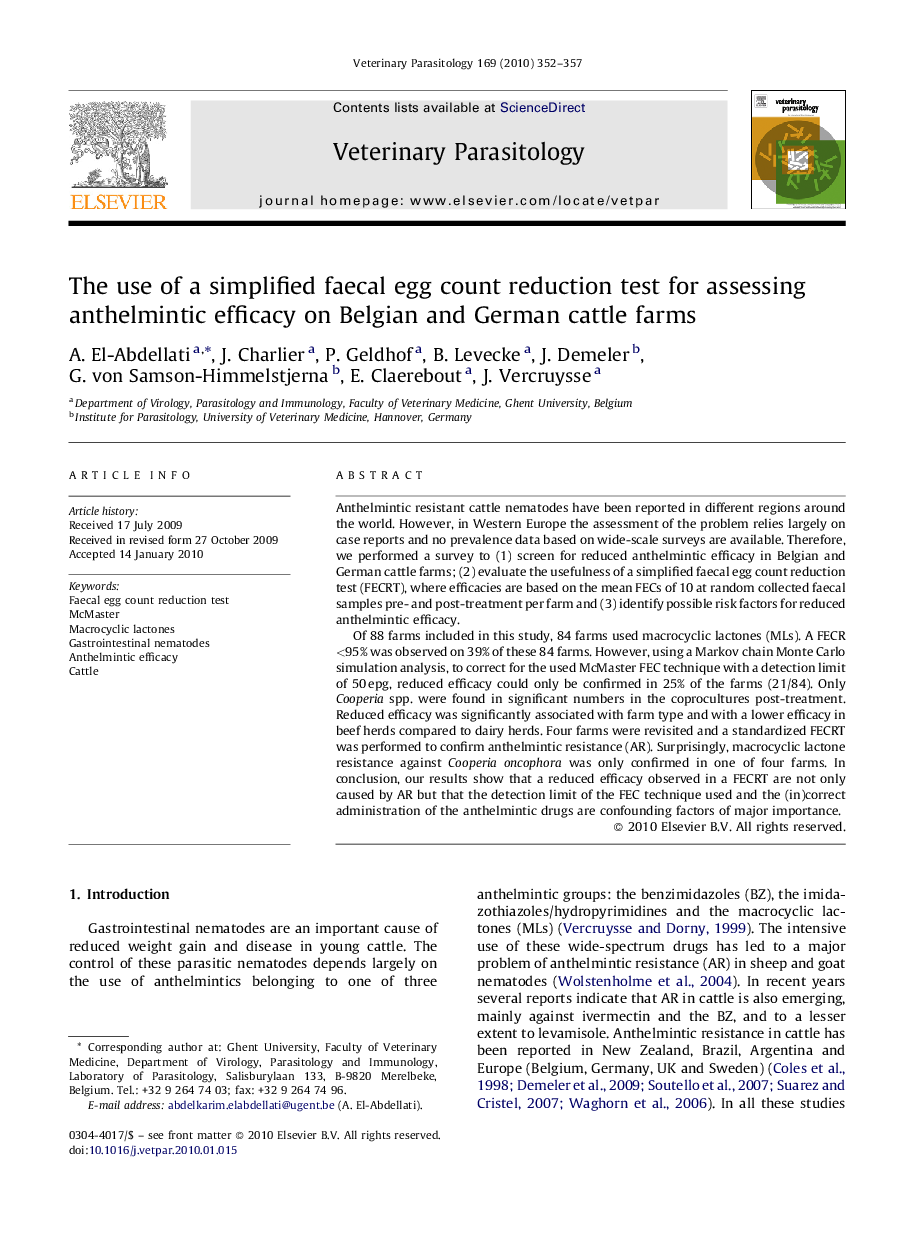| Article ID | Journal | Published Year | Pages | File Type |
|---|---|---|---|---|
| 2470876 | Veterinary Parasitology | 2010 | 6 Pages |
Anthelmintic resistant cattle nematodes have been reported in different regions around the world. However, in Western Europe the assessment of the problem relies largely on case reports and no prevalence data based on wide-scale surveys are available. Therefore, we performed a survey to (1) screen for reduced anthelmintic efficacy in Belgian and German cattle farms; (2) evaluate the usefulness of a simplified faecal egg count reduction test (FECRT), where efficacies are based on the mean FECs of 10 at random collected faecal samples pre- and post-treatment per farm and (3) identify possible risk factors for reduced anthelmintic efficacy.Of 88 farms included in this study, 84 farms used macrocyclic lactones (MLs). A FECR <95% was observed on 39% of these 84 farms. However, using a Markov chain Monte Carlo simulation analysis, to correct for the used McMaster FEC technique with a detection limit of 50 epg, reduced efficacy could only be confirmed in 25% of the farms (21/84). Only Cooperia spp. were found in significant numbers in the coprocultures post-treatment. Reduced efficacy was significantly associated with farm type and with a lower efficacy in beef herds compared to dairy herds. Four farms were revisited and a standardized FECRT was performed to confirm anthelmintic resistance (AR). Surprisingly, macrocyclic lactone resistance against Cooperia oncophora was only confirmed in one of four farms. In conclusion, our results show that a reduced efficacy observed in a FECRT are not only caused by AR but that the detection limit of the FEC technique used and the (in)correct administration of the anthelmintic drugs are confounding factors of major importance.
